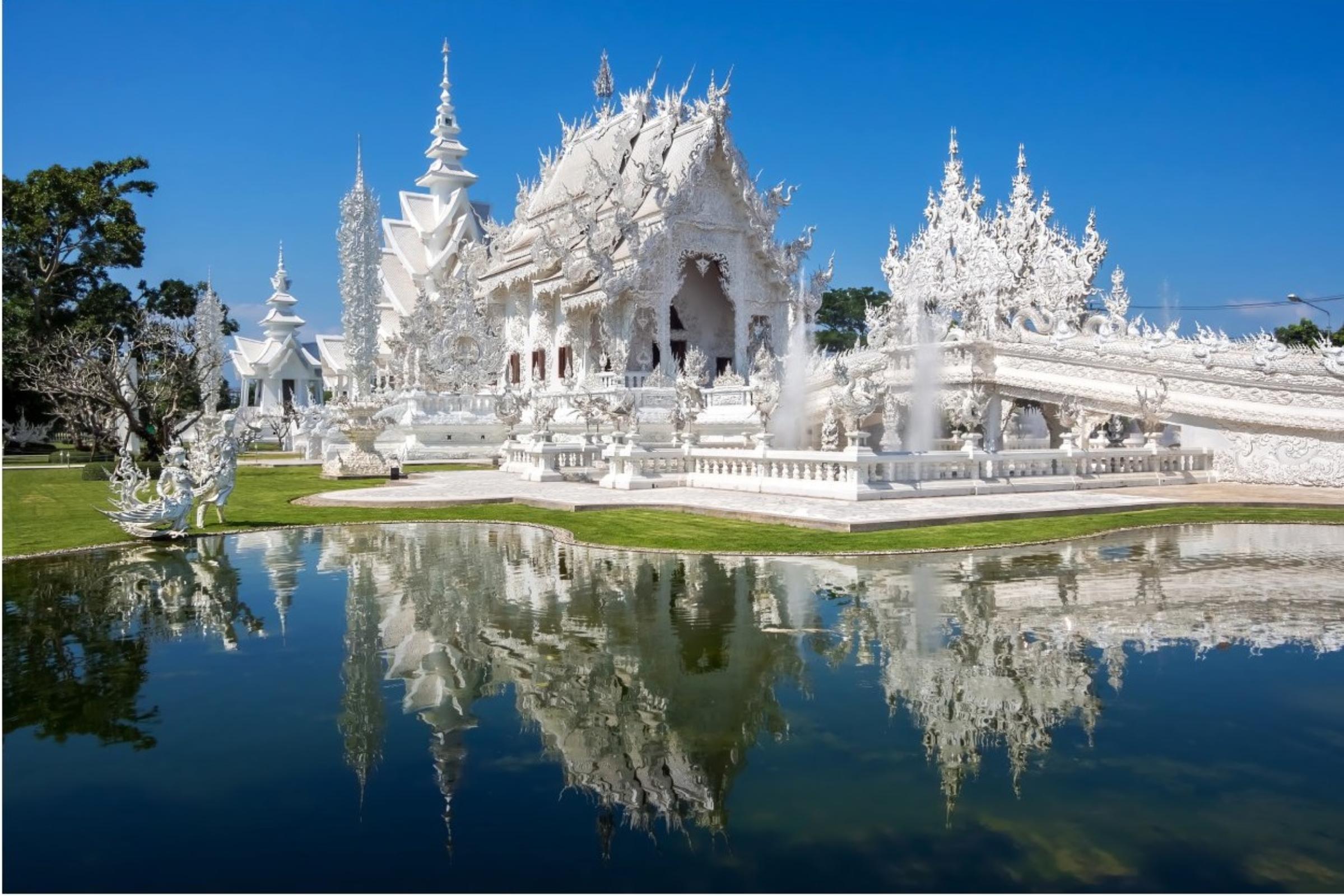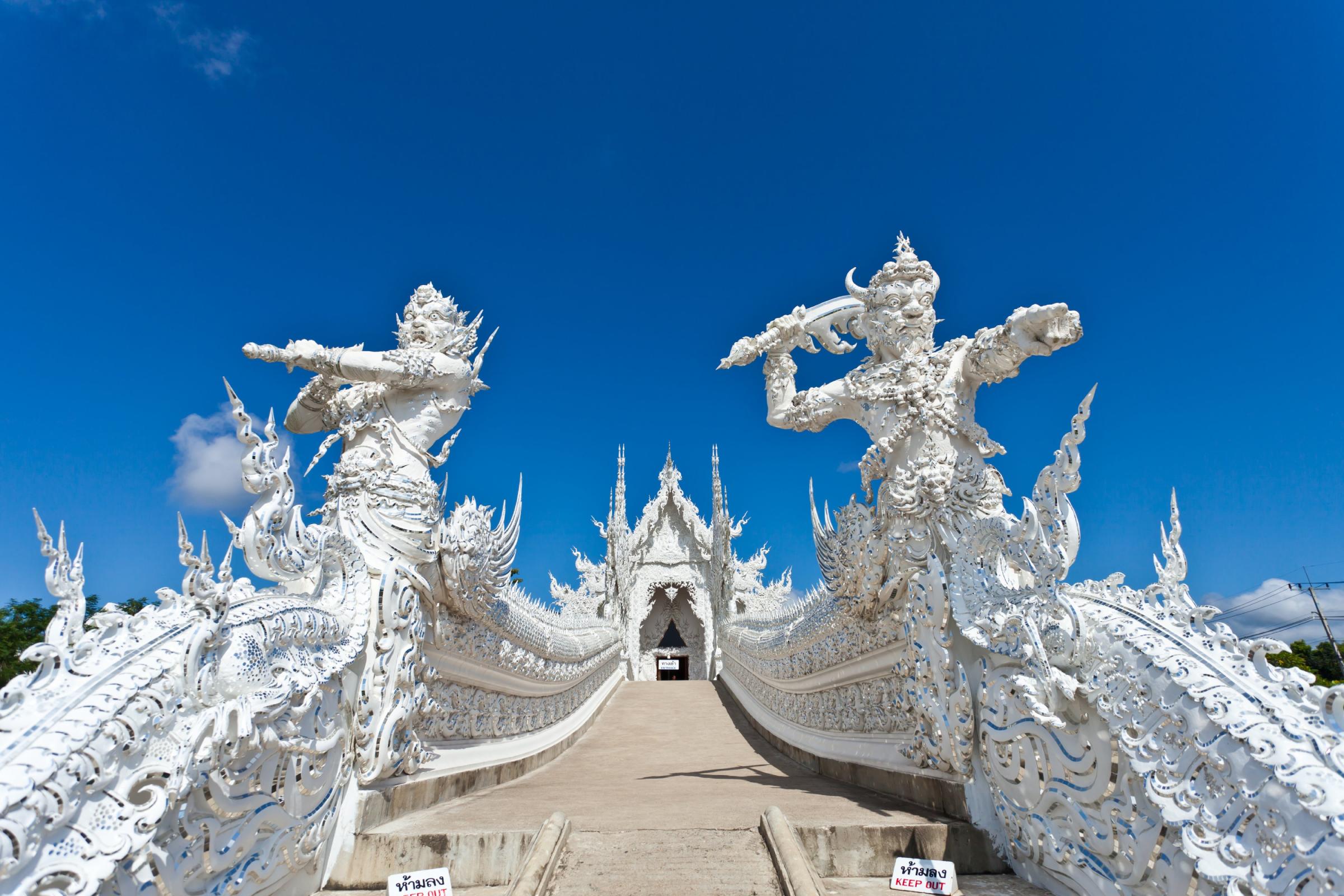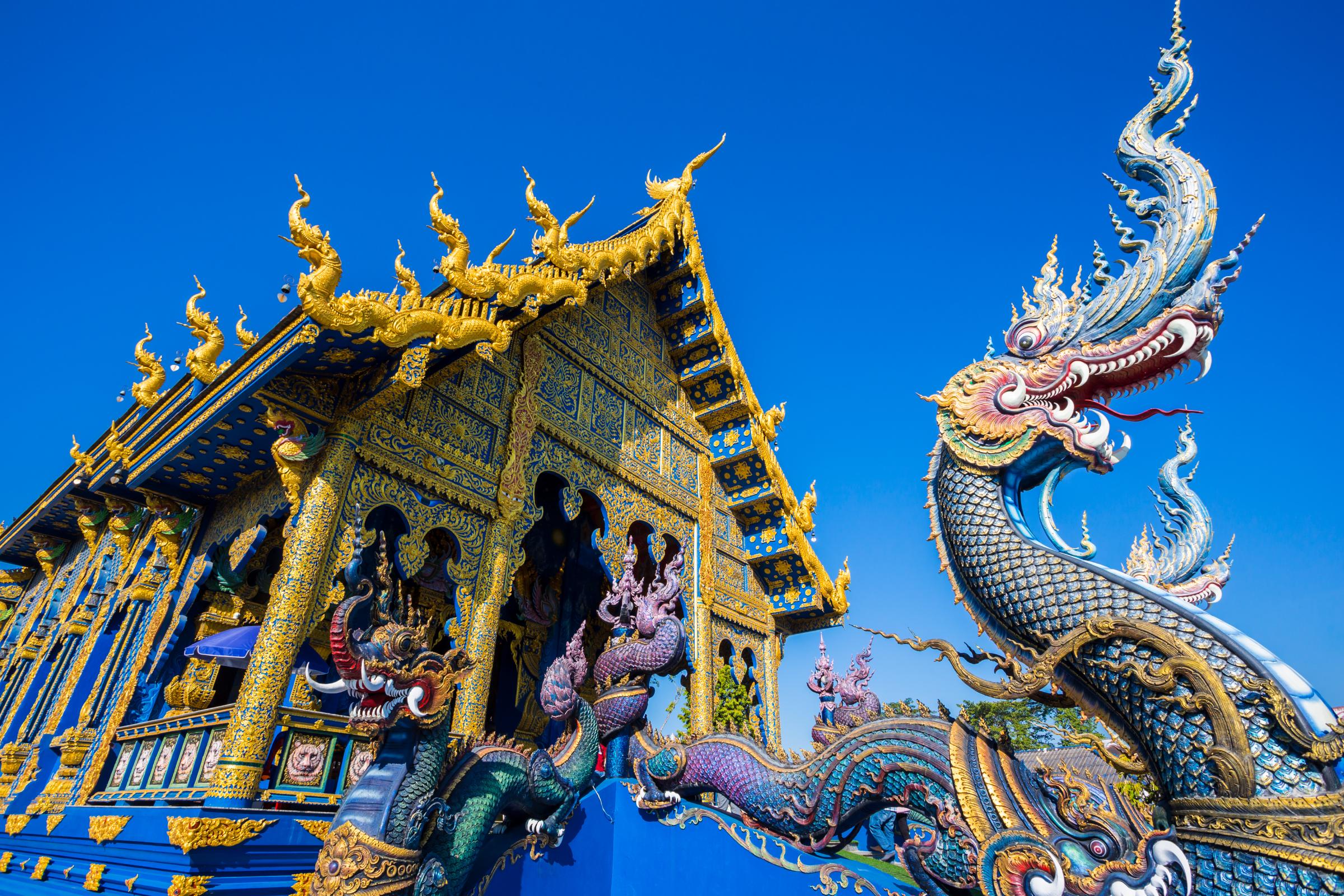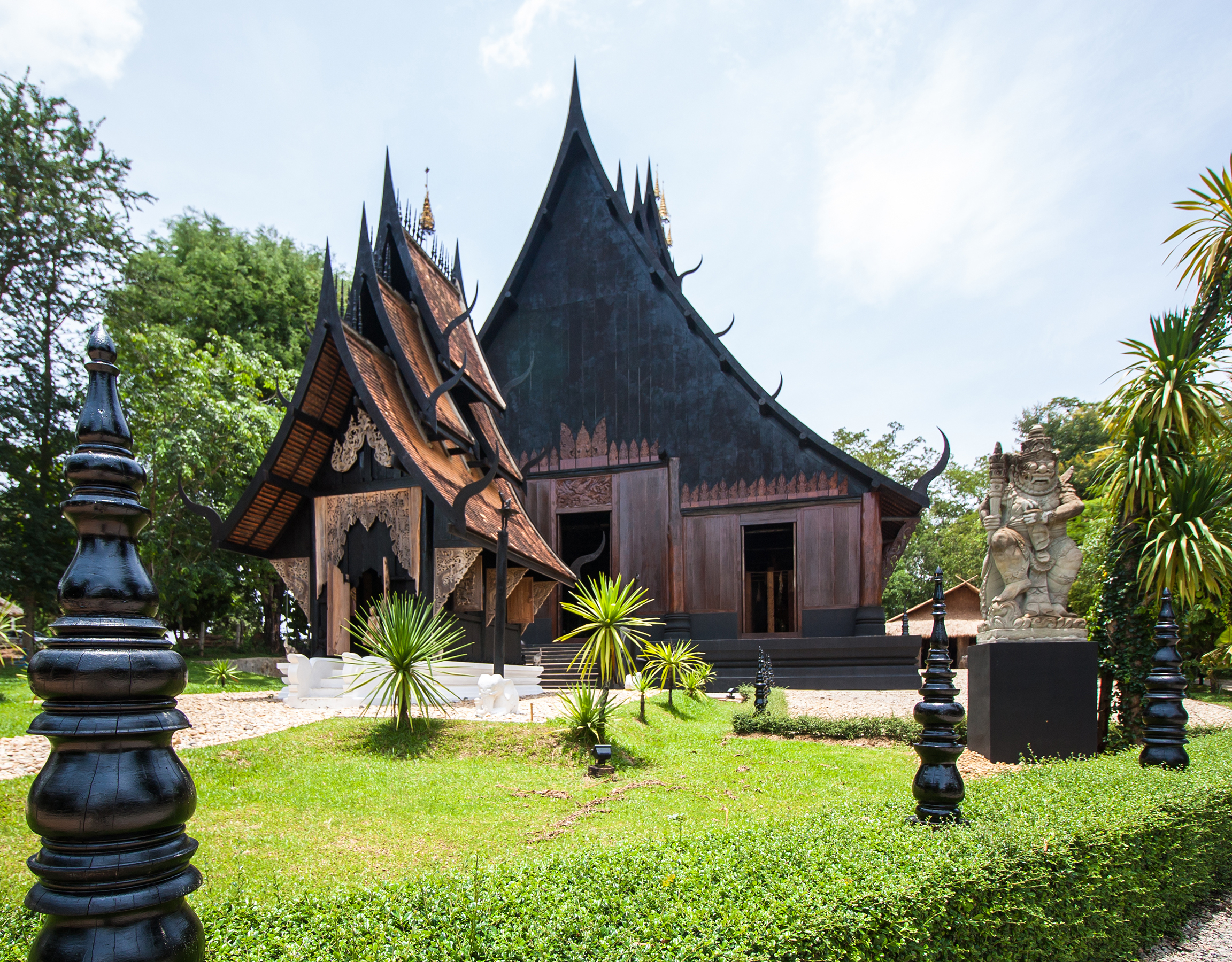"Discover the Enchanting Charms of Chiang Rai: White & Blue Temples and Black Museum"
#Chiang Rai# White Temple# Blue Temple# Black Museum# Iconic Landmarks# Thai Architecture# Cultural Attractions# Artistic Masterpieces# Religious Sites# Unique Design# Historical Landmarks# Must-Visit Places# Northern Thailand# Travel Destinations
5(1 ratings)
US$44
Nestled in the northernmost part of Thailand, Chiang Rai is a city steeped in rich history and cultural heritage. Among the myriad of attractions that this charming city has to offer, three iconic landmarks stand out as must-visit destinations for travelers seeking to immerse themselves in the beauty and spirituality of Chiang Rai.
The first of these iconic landmarks is the White Temple, also known as Wat Rong Khun. A contemporary masterpiece of Thai architecture, the White Temple is a vision of ethereal beauty, with its pristine white facade gleaming in the sunlight. Designed by renowned Thai artist Chalermchai Kositpipat, the temple is a stunning fusion of traditional Buddhist art and modern design elements. As visitors approach the temple, they are greeted by a sea of intricate white carvings and sparkling mirror mosaics that reflect the sun's rays, creating a dazzling spectacle that is truly awe-inspiring.
Next on the list of Chiang Rai's iconic landmarks is the Blue Temple, officially known as Wat Rong Suea Ten. This striking temple is a testament to the artistic vision of its creator, Chalermchai Kositpipat, who also designed the White Temple. The Blue Temple's vibrant blue exterior, adorned with intricate golden details, exudes a sense of serenity and tranquility that envelops visitors as they step inside. The interior of the temple is equally mesmerizing, with walls painted in hues of blue and gold, and a magnificent blue Buddha statue that serves as the focal point of the sacred space. A visit to the Blue Temple is a truly enchanting experience that promises to leave a lasting impression on all who wander its hallowed halls.
Last but certainly not least is the Black House, or Baan Dam Museum, a unique and enigmatic attraction that offers a stark contrast to the pristine white and vibrant blue temples of Chiang Rai. Created by revered Thai artist Thawan Duchanee, the Black House is a collection of over 40 black wooden buildings that house a diverse array of art pieces, artifacts, and curiosities. The dark, brooding architecture of the Black House stands in stark contrast to the surrounding lush greenery, creating a sense of mystery and intrigue that beckons visitors to explore its shadowy depths. From intricately carved furniture to eerie taxidermy displays, the Black House is a place of wonder and contemplation that offers a glimpse into the complex and multifaceted soul of Thailand's artistic heritage.
In conclusion, the most three icons in Chiang Rai – the White Temple, Blue Temple, and Black House – are not just architectural marvels, but also embodiments of the city's rich cultural tapestry and spiritual legacy. A visit to these iconic landmarks is a journey of discovery and enlightenment, where travelers can immerse themselves in the beauty, artistry, and history of Chiang Rai, and forge memories that will last a lifetime.
The first of these iconic landmarks is the White Temple, also known as Wat Rong Khun. A contemporary masterpiece of Thai architecture, the White Temple is a vision of ethereal beauty, with its pristine white facade gleaming in the sunlight. Designed by renowned Thai artist Chalermchai Kositpipat, the temple is a stunning fusion of traditional Buddhist art and modern design elements. As visitors approach the temple, they are greeted by a sea of intricate white carvings and sparkling mirror mosaics that reflect the sun's rays, creating a dazzling spectacle that is truly awe-inspiring.
Next on the list of Chiang Rai's iconic landmarks is the Blue Temple, officially known as Wat Rong Suea Ten. This striking temple is a testament to the artistic vision of its creator, Chalermchai Kositpipat, who also designed the White Temple. The Blue Temple's vibrant blue exterior, adorned with intricate golden details, exudes a sense of serenity and tranquility that envelops visitors as they step inside. The interior of the temple is equally mesmerizing, with walls painted in hues of blue and gold, and a magnificent blue Buddha statue that serves as the focal point of the sacred space. A visit to the Blue Temple is a truly enchanting experience that promises to leave a lasting impression on all who wander its hallowed halls.
Last but certainly not least is the Black House, or Baan Dam Museum, a unique and enigmatic attraction that offers a stark contrast to the pristine white and vibrant blue temples of Chiang Rai. Created by revered Thai artist Thawan Duchanee, the Black House is a collection of over 40 black wooden buildings that house a diverse array of art pieces, artifacts, and curiosities. The dark, brooding architecture of the Black House stands in stark contrast to the surrounding lush greenery, creating a sense of mystery and intrigue that beckons visitors to explore its shadowy depths. From intricately carved furniture to eerie taxidermy displays, the Black House is a place of wonder and contemplation that offers a glimpse into the complex and multifaceted soul of Thailand's artistic heritage.
In conclusion, the most three icons in Chiang Rai – the White Temple, Blue Temple, and Black House – are not just architectural marvels, but also embodiments of the city's rich cultural tapestry and spiritual legacy. A visit to these iconic landmarks is a journey of discovery and enlightenment, where travelers can immerse themselves in the beauty, artistry, and history of Chiang Rai, and forge memories that will last a lifetime.
Pick up from Chiang Mai about about 07:00-07:30 a.m. driving roughly 01:30 hour visiting the natural hot springs at Mae Kajan Hot Springs along the way. Forwarding more 01:30 hour to The White Temple well known as Wat Rong Khun, is a privately owned art exhibit in the style of a Buddhist temple, Chiang Rai Province. Designed and constructed by Chalermchai Kositpipat, a famous Thai visual artist. Forwarding to Wat Rong Khun is a unique temple that stands out through the white color. The Blue Temple also well known as Wat Rong Suea Ten, is a Buddhist temple that stands out from the others because of its sapphire blue color. The Black House or well known as Baan Dam is one of the strangest and most interesting landmarks in Chiang Rai. Exceptional entrance fee 300 THB/ adult,150 THB/ child to visiting long neck Karen village. Returning back to Chiang Mai about 18:00-18:30 p.m.



